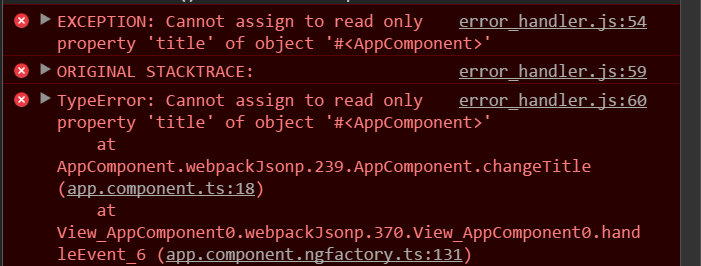Decorators 是 function 掛有 @前綴符號,可以用於 class、paramemter、method 或 property的前面。用來提供額外的資訊。
Angular也將Decorators的功能,應用於本身的架構內,例如 @Component、@NgModule等,本篇文章會討論如果我們也想要自訂Decorators時,我們要怎麼去實作。
自訂Decorator
就如前言所說的,Decorator是一個function, 如果要使用他時,可以在 class/parameter/method/property前面使用 @<function> 就可以了。
一個基本的Decorator會長這樣子
1 | export function myDecorator(target){ |
而使用他的方式如下
1 | import { myDecorator } from '...'; |
以上就是最基本的使用方式,在decorator的 target 參數,會取得使用者的class/parameter/method/property的程式碼內容
應用情境
Property Decorators
1 | export function ReadOnly(defaultValue) { |
這個例子,是自訂一個ReadOnly的Decorator,功能是讓所設定到的屬性有預設值並且是唯讀狀態, 無法被修改。
如果試著去修改該屬性,如 #16行要做的事情,就會發生錯誤訊息

Class Decorators
如果將Decorators應用在Class上,我們就可以改寫/擴充constructor的行為
1 | export function log(prefix?: string) { |
1 | ("hello world") |
輸出結果

現有Library有使用自訂Decorators的
-
ngrx/store搭配 effects套件,讓angular內在設定redux動作時,變得比較直覺,程式碼也精簡很多
心得
Decorators真的很強大,但是就目前這個階段,我尚未想到到底在哪種情境下是可以使用的,但是早一點知道這個東西的存在也好,因為實作上並不複雜,只是不知道在何時何地會用到他。